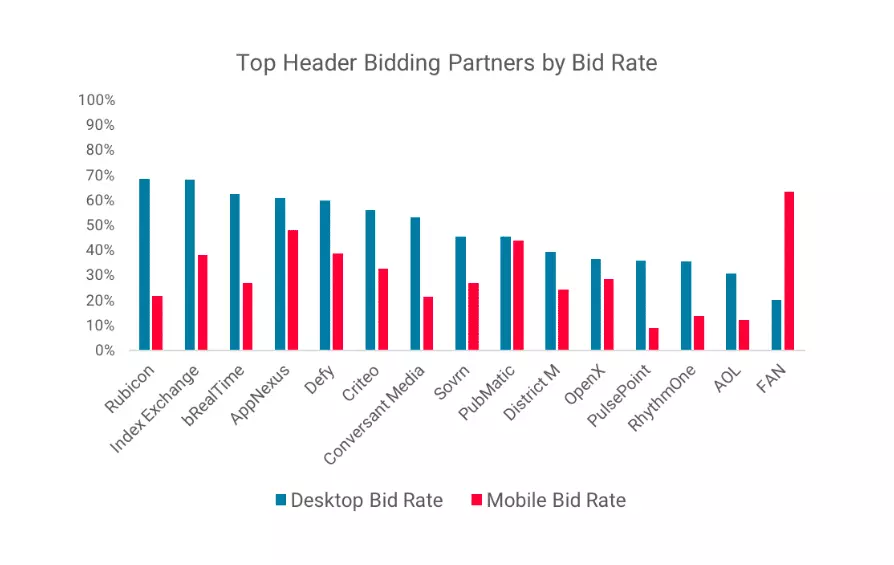Increasing ad fill rate doesn’t essentially require you to partner with multiple ad networks. There’s a couple of proven techniques you could implement today to drastically increase ad fill rate.
The pace at which the online advertising industry evolves is staggering. Strategies that work at present may not have similar progress tomorrow. Brands teaming up with publishers are one of the most effective marketing strategies to boost revenue these days. But it’s undeniably hard to get premium advertisers to fill all your impressions (which is easily a million) through direct sales.
For mid-sized publishers, it’s far from possible. So, many of the publishers started to run ads with the help of ad networks and programmatic vendors (SSPs). Here comes the term “fill rates”. Before finding the ways to improve fill rates, let’s first understand what is fill rate and why is it essential?
Every time when there is a user on the website, an ad request is sent from the publisher’s end which can either be returned with an ad or with no ad, leaving the ad inventory with blank space. The percentage of ad requests that are effectively filled to the number of ad requests raised is termed as “fill rate”.
Fill rates assist publishers in deciding the utilization of their inventory. When there is a good fill rate percentage, this means that the website is yielding efficiently with greater profitable earnings. Fill rates also help in determining the site efficiency and improvements required for performance.
Table of Contents
How to increase your ad fill rate?
Obviously, you need to optimize the factors affecting the fill rates, if you would like to consistently have higher ad fill rates.
1. Setting up floor price – dynamic or static
This has always been a question for most publishers. Setting up a floor price is a bit tricky as going above the threshold you might lose the bids and lower your fill rate. On the other hand, you could be undervaluing the ad impressions by lowering your floor price.
Dynamic floor pricing, aimed at dynamically adjusting the floor could help you increase the fill rate without compromising the revenue. You can set-up a dynamic floor price in Google Ad Manager by enabling Target CPM. In Prebid, it can be done by adding floor price modules in the set-up. Moreover, you can also add a floor price vendor to the supply chain to get the most optimal floors for your ad inventories. However, you will have to pay them a fee.
What’s the way out?
We recommend you create line items with different floor prices ($1.0, $1.2, $1.4, etc.) to capture all the bids from a demand partner. This way, you can get the maximum fill rate while maintaining the CPM.
2. Finding the right demand for your supply
This imbalance is due to your demand partners – Ad Networks and SSPs with whom you’re partnering. If they don’t have enough or the right buyers to serve ads on your website, you’ll end up rendering a blank impression.
Of course, it’s lost revenue and ideally, you should try to fill every impression. However, a 100% fill rate isn’t always the best choice.
What’s the way out?
Header Bidding. Though you’ve heard it many times, you might still haven’t implemented it properly. Worst case, you’re partnering with the wrong supply-side platforms. We’ve seen a global SSP failing to deliver for a publisher, just because they couldn’t find the right buyer beating the floor price.
So, we’d recommend you run experiments and track the fill rates of the demand partners. To understand their fill rate, you need to analyze their bid rate and win rate in the auction.
3. Ideal Ad Placements
Ad placement impacts the viewability of ads which can influence the fill-rate. As defined by the MRC, you need to ensure that the ad is shown by 50 percent for 1 sec to the user. And, considering the users are staying only for a few seconds on a page, it’s a big task. Even if you manage to place the ad above the fold (ATF), it isn’t enough.
Ensure you deliver what the user wants (user intent) and place ads according to your layout in a non-intrusive way.
4. Mobile Web
The Mobile web is a different giant altogether. Especially, with AMP, you need to take a peculiar approach. Your desktop leaderboard may have a 100% fill rate, but that doesn’t mean your mobile traffic is settled.
Choosing the new format or demand partner who doesn’t have demand for the mobile web could lead to lower fill rates.
What’s the way out?
In a word, mobile demand. From the data below, FAN (Facebook Audience Network) didn’t bid for desktop but exceeds every other demand partner on mobile. The number is from the accumulated impressions (from different publishers) and can vary for your site.
So, choose the best bidders who’ve known for mobile web demand and start optimizing afterward. Need to access the right demand, reach us.

5. Geo-targeting
Geo-targeting is yet another factor to increase ad fill rate. Often, advertisers who are running ads programmatically try to capitalize on national events and festivities. Hence, they will run a campaign on particular geos. If your audience doesn’t belong to the preset geos, you’ll never receive any bid from the advertisers.
This might decrease your fill rate.
What’s the way out?
You need to do two things.
- Search for the ad network that works best in your targeted geography and provides maximum demand.
- Build the audience from the tier-1 countries as advertisers would be willing to spend often on them.
6. Contextual Targeting
If you’re a news site, you’ll end up garnering millions of views quite soon. But the audience couldn’t be segmented under one particular category. Though programmatic advertising is growing exponentially, contextual targeting still exists and the majority of ad networks rely on it to serve ads.
This means you might miss opportunities even though you had the right user but not the content.
What’s the way out?
Audience Segmentation is the best way to assist both editorial and ad sales teams in this situation. Once you know what they like, you can give them the right content. The right content attracts the right users and ads.
7. Audience Data
Let’s talk about programmatic. It has been spreading like a wildfire and almost all the publishers with over a few million page views have implemented or planning to implement header bidding or exchange bidding. Data is the most important factor to determine your ad fill rate and CPM. So, you need to show the bidder who your user is. Just showing up you have a user isn’t enough.
What’s the way out?
You can build your first-party data, use a customer data platform (CDP), or get the data from a data management platform (DMP).
8. Ad Sizes
It’s imperative to run ad sizes that have demand all the time. Considering a newer format will work provided the availability of demand is high.
So, should you go with the most popular one? You can, but there’s a problem. Most popular ad sizes attract more advertisers, which makes them an ideal target for fraudsters.
What’s the way out?
For single slot sizes, always use flexible ad sizes on your advertising placements to attain higher fill rates. This works really well in case the exact slot size is unavailable. The biggest allocated ad size will be the one that displays the campaign on specific ad placement. This will boost the contest, and it will be favorable for you as well as the advertiser.
Another way is to know what ad sizes work better for everyone.
Conclusion
As a publisher, your aim shouldn’t be to increase the ad fill rates. Consider improving the user experience and place ads strategically along the way. Once you study and understand what works and what doesn’t, you would be able to make informed decisions.
The above-said methods are proven and we’ve deployed them on many publishers. The results were promising and consistent. Let us know how it went for you? What next? If you haven’t read already, then read about the tips to increase your programmatic CPM.























